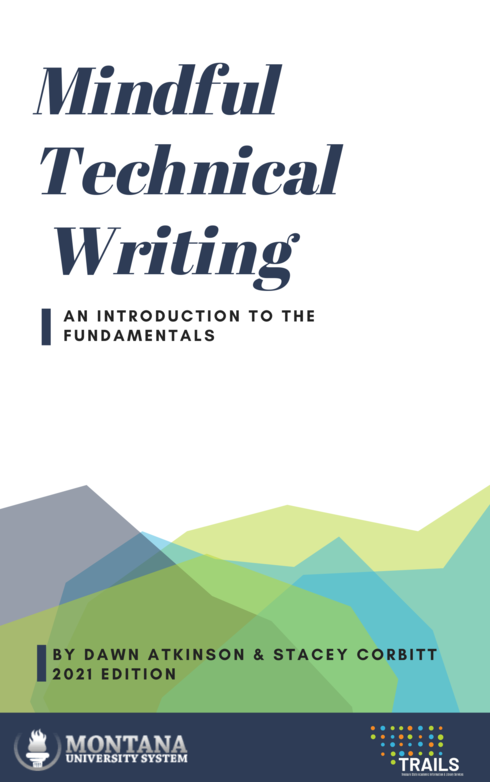
 Grammar!
Grammar! Possessive adjectives
Possessive adjectives Style and grammar guidelines
Style and grammar guidelines Verb tense - grammar
Verb tense - grammar Voice
Voice.png) Mindful technical writing: An introduction to the fundamentals by
Mindful technical writing: An introduction to the fundamentals by Citing sources no longer means endnotes or footnotes. It is a simple way of noting that you are borrowing an author's words or ideas by inserting a brief parenthetical or narrative acknowledgement in your paper that includes the author's last name, and the year the material was published; page numbers are no longer required. When the reader sees this reference to an author they know to refer to the References portion of the paper to find the complete bibliographic citation.
Paraphrasing is when you use an idea from a piece of writing, but put it in your own words. You can change the structure and words but must stay true to the meaning of the passage. Paraphrasing still needs to refer to the author but does not use quotation marks.
It is not necessary to provide a page number in your citation unless you think it will be difficult for the reader to locate the passage you are citing, for example, include a specific page number(s), paragraph number(s), or other location (e.g., section name) if the source work being paraphrased is long or complex.
Quoting is when you take a phrase word-for-word from a body of text. You must use quotation marks and you must always reference the original writer/speaker either parenthetical or narrative.
PARENTHETICAL VS. NARRATIVE IN-TEXT CITATIONS
A Parenthetical citation puts the author's or authors' last name(s), a comma, and the year in parentheses.
Clinical reasoning is a skill that nurses use to provide nursing care (Ryan & Kramer, 2024). Nurses of the future are expected to work in a globalized work that is dynamic, constantly evolving, and interconnected (Astle et al., 2024).
A Narrative citation puts the author's or authors' last names(s) in the sentence, followed by the year in parentheses.
Ryan and Kramer (2024) discussed the importance of collecting assessment data in a way that promotes patient openness. According to Astle et al. (2024), the future of nursing in a globalized world is constantly changing and interconnected.
The Reference list provides all the information for each source ( ** remember - the references list uses hanging indents):
Example of a whole edited book:
Astle, B. J., Duggleby, W., Potter, P., Stockert, P. A., Perry, A. G., & Hall, A. (Eds.). (2024). Potter and Perry's Canadian fundamentals of nursing (7th ed.). Elsevier.
Example of a chapter of an edited book:
Ryan, S. W., & Kramer, M. L. (2024). Nursing assessment, diagnosis, and planning. In B. J. Astle, W. Duggleby, P. A. Potter, P. A., Stockert, A. G. Perry, & A. Hall (Eds.). Potter and Perry's Canadian fundamentals of nursing (7th ed., pp. 186-211). Elsevier.
 Sample papers
Sample papers Check your tone: A blog post on keeping it professional
Check your tone: A blog post on keeping it professional Academic Writer Tutorial - The Basics
Academic Writer Tutorial - The Basics How to use concept mapping
How to use concept mapping Proofreading
Proofreading Paraphrasing - what it is
Paraphrasing - what it is Quotes. Quotations.
Quotes. Quotations.